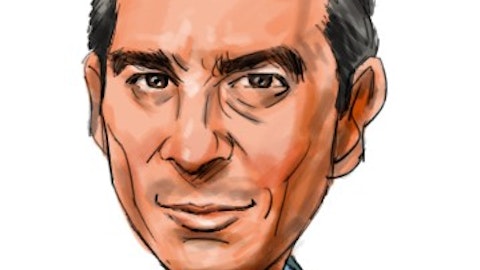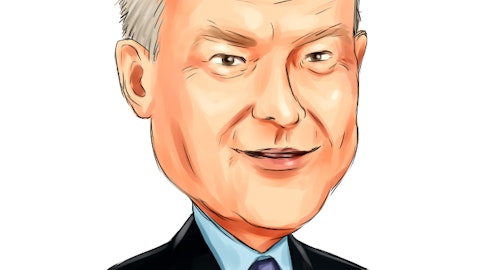As seen below, ACE’s combined ratio over the past five years has averaged 6.2 percentage points lower than that of any major insurer in the world, underscoring the company’s skill in understanding and appropriately pricing risk.

Source: Chubb Investor Presentation
Additionally, ACE and CB are both very conservative with their investment portfolios. Fixed-income securities represent over 90% of both companies’ portfolios and are less volatile than equity investments. The bonds each company is invested in have relatively short durations, making them somewhat less sensitive to interest rate movements, and high quality credit ratings.
There’s also a lot to like about ACE’s CEO Evan Greenberg, who orchestrated the deal. The combined company will be named Chubb, not ACE. The CEO said, “I don’t know any other way to show respect to somebody to begin with than to say we’re going to take your name.” How often does a CEO take that approach? It probably didn’t hurt that CB’s was founded in 1882 and has more brand recognition, too.
The merger’s main benefits are the cost synergies that can be obtained. The transaction is expected to immediately add to CB’s earnings per share and increase profits by over 10% beginning in the third year after the deal closes. CB expects to generate $650 million in annual cost savings by 2018 and generate strong growth from cross-selling opportunities.
Besides the merger and both companies’ conservatism, CB’s business is advantaged due to its established distribution networks and massive number of field agents to sell its policies. CB’s history dates back to the late 19th century, which has provided it with over 130 years to build its network and establish a well-known brand recognized for quality service. New competitors would need years of time and millions of dollars to catch up.
Chubb’s Key Risks
Whenever a large acquisition is made, numerous risks present themselves – poor strategic fit, difficult integration work, overestimated synergies, employee turnover, cultural challenges, and more.
While ACE’s acquisition of CB was a huge deal, this also isn’t ACE’s first rodeo. The company has successfully acquired and integrated over 15 businesses in the past, including numerous multi-billion dollar deals, which hopefully helps mitigate some of the risk associated with this merger. However, we believe this is the largest risk to CB’s long-term earnings potential and will continue watching it closely.
Beyond the merger, the insurance industry poses several risks that can impact the company’s near-term results. More specifically, insurance pricing runs in cycles. As seen below, courtesy of Ernst & Young, the P&C industry’s combined ratio has been volatile over the past decade, ranging from a low of 92.6% in 2006 to a high of 107.7% in 2011.
When the combined ratio is low, it usually means that the industry has enjoyed a period with few catastrophe events, allowing insurers to rebuild their balance sheets and capital. With excess capital, there is more competition to write policies, which results in pricing pressure.
On the other hand, when several catastrophe events occur and/or investment income is very poor, there is less capital in the industry and pricing trends can turn more favorable. The industry has seen modest claims over the past three years as evidenced by the combined ratio remaining below 100%. In other words, pricing could be squeezed a bit over the coming years. Advances in data analytics could also result in more efficient pricing of policies, although we would expect CB to remain at the forefront of change in this area.

Source: Ernst & Young
In addition to industry pricing cycles, catastrophe events such as hurricanes can obviously have a severe impact on near-term financial results. They are as unpleasant as they are inevitable, but CB has the financial health to weather just about any storm. It is also one of the most conservative underwriters of any insurer.
Finally, it’s worth mentioning the impact that low interest rates are having on the investment income that CB can generate. Investment income is a key driver of an insurance company’s profits, and over 90% of CB’s investment portfolio is in fixed-income securities. With interest rates appearing like they could be lower for longer, investors could be disappointed with the investment income CB can generate over the coming years.





